“I don’t just do it for the money,” chuckles Mike Flarida, a top National Reining Horse Association competitor. Flarida says that the money is nice, but it’s just the icing on the cake. “I truly enjoy riding the horses.”
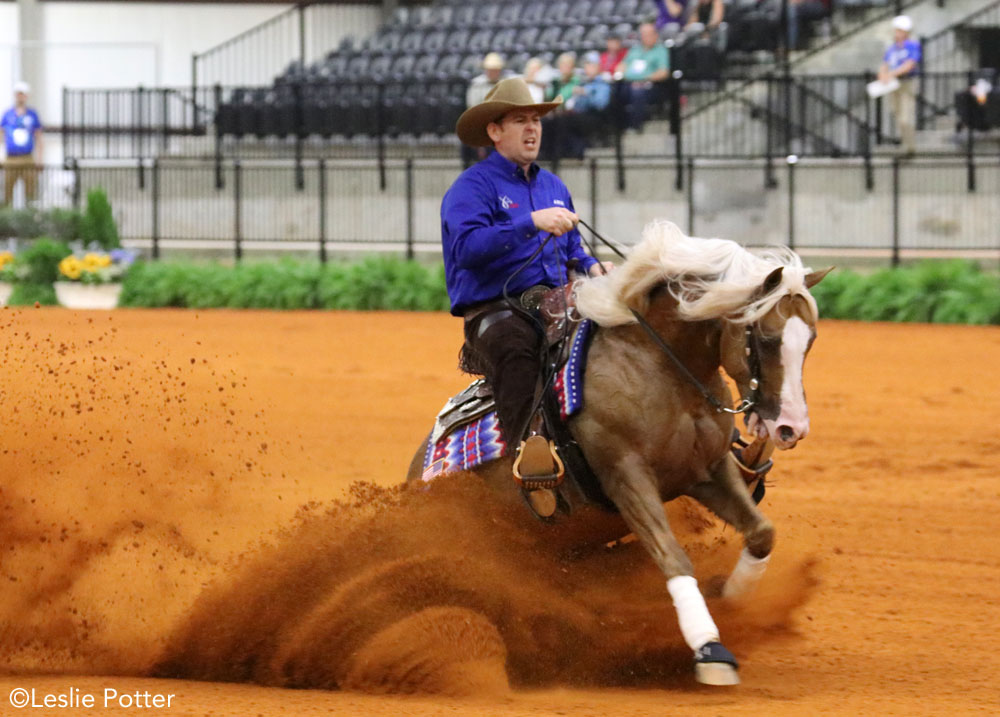
Red-Hot Sport
Why is reining so hot? And what type of rider is drawn to the sport?
First, reining competition dispenses with some of the artificial aspects of other types of horse show events. Although reiners are committed to professional turn-out and well-groomed horses, there’s no need for extravagant silver tack or custom-tailored, designer clothing.
Second, reining combines the elements of speed, riding skill and expert horse training, which in turn beckons to a certain type of competitor. In general, those drawn to reining are dedicated horsemen and women who are looking for another avenue of competition after being successful in some other style of riding.
“A lot of people who come to reining have a history or background in horses,” Mike Flarida explains. “They either rode hunter-jumpers or cutting horses, something where they learned a high level of horsemanship. I think the majority of people drawn to reining have already mastered the ability to ride.”
In Competition
In reining shows there are 10 different patterns that the NRHA has approved. Riders are notified before the competition which pattern they will have to perform. All patterns include small slow circles, larger circles done at speed, flying changes of lead, roll-back turns, complete spins to both the left and right, and the sliding stop. Competition is presented inside a show arena or pen.
According to the NRHA, each required movement receives a score from the judge, and horses are evaluated on smoothness, finesse, attitude, quickness and authority as they complete each maneuver. To exemplify that reining is a team effort between a “highly educated horse and an extremely skilled rider,” the NRHA handbook describes the goal of reining competition: “To rein a horse is not only to guide him, but also to control his every movement.” To English riders this description may ring familiar. “Reining is almost western dressage,” says Flarida.
The Reining Horse
Not every horse is suitable to be a reining prospect, however. Although Quarter Horses definitely dominate the sport, Flarida believes that’s partly because it’s the breed that most people associate with any western-style competition, and is the breed those riders coming from stock seat backgrounds are most comfortable with.
But Flarida was able to name Arabian and Morgan horses who’ve made their mark in national reining standings over the years. However, it’s more than just physical characteristics, such as correct conformation and athletic ability, that help make a top reining prospect. Flarida believes that a horse’s temperament is of paramount importance.
As a professional, he likes best to work with a horse that’s a happy horse — a horse that’s really willing to learn and accept training.
“They also have to accept the social responsibility of showing, such as traveling and being around other horses,” he says. He also looks for a horse with average intelligence. “A horse that’s too smart soon learns to anticipate everything. I become ‘old hat’ to them and they don’t listen anymore. A horse that’s too dumb doesn’t retain anything. The best horses are the ones of average intelligence that I can motivate.”
In general, reining horses are started during their 2-year-old year in a simple snaffle bit and taught to be responsive, all-around saddle horses. They learn the basics of a reining foundation: to lope quietly on a circle, gallop straight lines, halt and stand relaxed, step around in a turn and back willingly. The young horse must never be rushed in his training, or smoothness will suffer later.
It is the lucrative NRHA futurity that most reiners aim for in theirhorse’s 3-year-old season. Through regional competitions, the field is narrowed down to just 35 horses for the finals, which was held last year in Oklahoma City and was won by Mike Flarida on Whizard Jac.
Freestyle Reining
In 1986, another style of reining was added to the NRHA. Freestyle reining was introduced, and its popularity has soared with both riders and spectators. Freestyle reining is similar to freestyle dressage in that riders are allowed to create their own patterns (incorporating some required movements) and choreograph them to music. Freestyle reiners are also encouraged to wear appropriate costumes.
Kathy Copus of Santa Barbara, California, is a freestyle reining competition. Fitting the typical description, Copus came from a background in horses, having been a successful huntseat rider as a junior and amateur rider. She then turned to riding in western pleasure and trail events, but wasn’t much interested in reining until her husband, a reining competitor, had back surgery. That left his 9-year-old gelding, Skeeto Command, available. Copus began having fun riding the fully trained Quarter Horse, and watched her trainer, Roberta McCarty, finish in the ribbons on Skeeto Command in open freestyle.
“You gotta do this!” she told Copus.
Copus found herself focused on a new goal. The first step was to choose a song that fit her horse. She settled on “Tan Shoes with Pink Shoelaces,” an oldies standard with an upbeat, quick tempo that matched her horse’s rather short strides at the gallop. Next came the costume.
“The song gave us ideas for the costume, because in the song is the description of the main character: ‘he wears tan shoes with pink shoelaces,’ plus a Panama hat and a polka dot vest. And we were able to make all of this, but we had to try out the Panama hat.”
Skeeto obliged Copus by accepting the hat around his ears. As part of her own costume, she also donned a polka dot vest, but hers was sleeveless and a little more low-cut than she had anticipated. “I had to put up with a few hoots from the audience, but it was fun!”
Her horse seemed to enjoy the freestyle, too. “He’s a very well-trained reining horse,” she says. Being able to practice her routine only a few times worked to her benefit. “He’s the type of horse that as soon as you begin any of the regular (NRHA) patterns, he immediately knows what comes next.” So the novelty of her freestyle performance kept him listening and focused on her.
“I think spectators enjoy watching the freestyle so much because it’s not the same horse doing the same pattern over and over again. Each performance is different,” Copus says, “and there’s a lot of creativity involved.”
Yet there are some purists among reiners who feel that the freestyle events detract from the time-honored horsemanship skills required in open competition. Flarida, who has also dabbled successfully in freestyle, offers both sides of the debate.
“Freestyle has been very good for the reining industry. It’s been great for the general public.” For example, Flarida cites his own performance in a freestyle exhibition he gave at Equitana horse fair in Louisville, Kentucky, where the crowd went wild. “Freestyle can be very artistic. But riding in costumes is not what reining is really all about. Some reiners feel that freestyle can strip away the dignity we’ve worked so hard to gain.”
Yet Flarida firmly believes that freestyle will continue, and over time, like every equestrian sport, there will be those riders who take the event to a higher level. Participants like Kathy Copus and thousands of appreciative fans wholeheartedly agree.

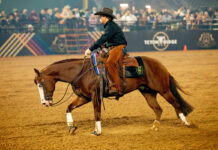
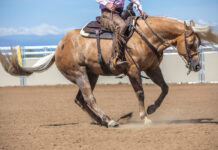
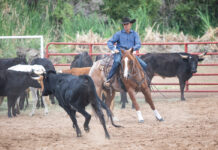
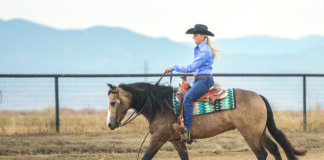

good article, i didn’t even know what reining was so this was helpful.
Thank you. I didn’t know much about reining, wanted to try it and realize that it is not for me
You’ve convinced me to try it!
I have a cutting horse and after watching Stacy Westfall, I now ride him bridleless, and saddleless at our local fairs. Only at the walk and trot for now, but am hoping to lope next year. I am told we have become a favorite…and I am 70 yrs young.